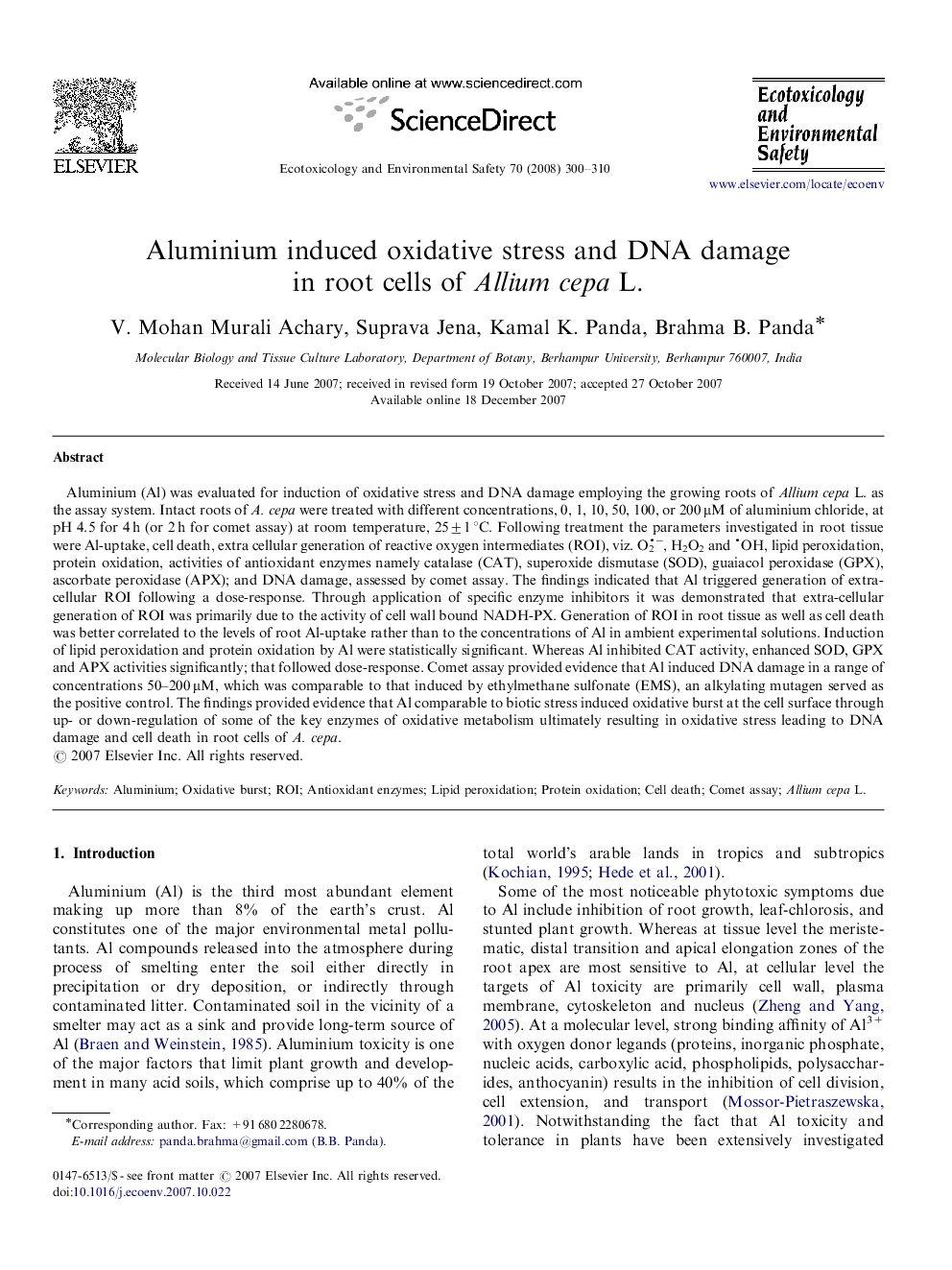| Article ID | Journal | Published Year | Pages | File Type |
|---|---|---|---|---|
| 4422135 | Ecotoxicology and Environmental Safety | 2008 | 11 Pages |
Aluminium (Al) was evaluated for induction of oxidative stress and DNA damage employing the growing roots of Allium cepa L. as the assay system. Intact roots of A. cepa were treated with different concentrations, 0, 1, 10, 50, 100, or 200 μM of aluminium chloride, at pH 4.5 for 4 h (or 2 h for comet assay) at room temperature, 25±1 °C. Following treatment the parameters investigated in root tissue were Al-uptake, cell death, extra cellular generation of reactive oxygen intermediates (ROI), viz. O2−, H2O2 and OH, lipid peroxidation, protein oxidation, activities of antioxidant enzymes namely catalase (CAT), superoxide dismutase (SOD), guaiacol peroxidase (GPX), ascorbate peroxidase (APX); and DNA damage, assessed by comet assay. The findings indicated that Al triggered generation of extra-cellular ROI following a dose-response. Through application of specific enzyme inhibitors it was demonstrated that extra-cellular generation of ROI was primarily due to the activity of cell wall bound NADH-PX. Generation of ROI in root tissue as well as cell death was better correlated to the levels of root Al-uptake rather than to the concentrations of Al in ambient experimental solutions. Induction of lipid peroxidation and protein oxidation by Al were statistically significant. Whereas Al inhibited CAT activity, enhanced SOD, GPX and APX activities significantly; that followed dose-response. Comet assay provided evidence that Al induced DNA damage in a range of concentrations 50–200 μM, which was comparable to that induced by ethylmethane sulfonate (EMS), an alkylating mutagen served as the positive control. The findings provided evidence that Al comparable to biotic stress induced oxidative burst at the cell surface through up- or down-regulation of some of the key enzymes of oxidative metabolism ultimately resulting in oxidative stress leading to DNA damage and cell death in root cells of A. cepa.
